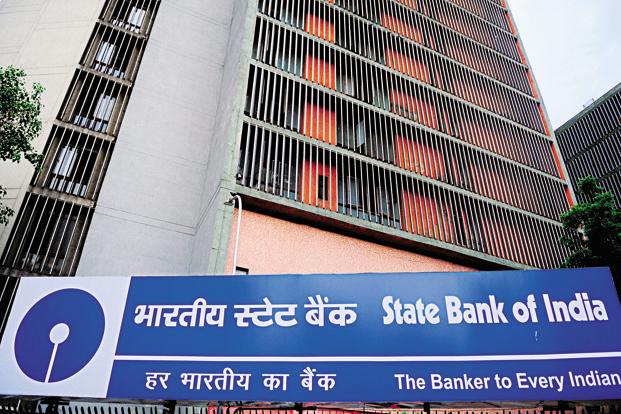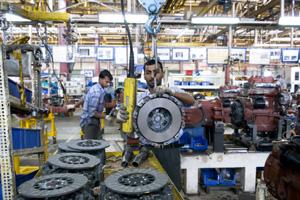India’s private banks, by and large, have been able to contain their bad assets, but there is no let up in the growth of bad loans of state-owned lenders. In the December quarter, most public sector banks recorded higher non-performing assets (NPAs) and, for some of them, the growth has been pretty high. Three such banks now have gross NPAs more than 5% of their loans and many more between 3% and 5%. For some, the deterioration of asset quality in the past one year has been quite dramatic. For instance, Central Bank of India’s gross NPAs have gone up from 3.69% to 5.64% between December 2011 and December 2012. Similarly, UCO Bank’s gross NPAs jumped from 3.49% to 5.53% and that of Punjab National Bank almost doubled—from 2.42% to 4.61%. For Indian Bank, it has more than doubled, from 1.35% to 3.18 %.
Gross NPAs of 40 listed Indian banks rose to Rs.1.79 trillion from Rs.1.25 trillion in December, up 43.1% from a year-ago period. A slowing economy is, indeed, the main reason behind the growth in banks’ bad assets as borrowers’ ability to repay is affected, but indiscriminate lending as well as poor credit monitoring could also be reasons behind the rise. Also, a change of guard at an Indian bank often leads to a sudden spurt in NPAs as an outgoing chief executive officer (CEO) could be reluctant in aggressively identifying a bad asset as the bank needs to set aside money for such assets and that dents its profit.
Typically, the CEO psychology is to leave on a high note. After all, who wants to sign off a poor balance sheet just before demitting office? Bad performance affects the chances of post-retirement assignments, which are critical for many public sector bank chiefs, not paid well enough to be able to lead a quality life after 60. So, monitoring can become a bit lax and signs of health deterioration in a particular account can be overlooked for fear of a depression in earnings.
Also, the new incumbent often wants to start on a clean slate. He would typically like to dissociate himself from the balance sheet of the bank run by his predecessor; clean it up with a broom and, in cricketing parlance, take fresh guard. As a result, a bank’s earnings often drop when there is a change at the top. Even a relatively longer tenure of the CEO doesn’t make much difference. Two recent instances are State Bank of India and Bank of Baroda. In both cases, the outgoing bosses had spent five years at the helm but their banks still suffered from a sudden drop in profit when they retired as the successors chose to set aside large amounts of money to provide for, in the case of State Bank of India, employees’ pension liabilities, and bad loans in the case of Bank of Baroda.
Still, it may not be fair to blame the outgoing CEO always for the sudden drop in earnings. One needs to wait and watch for certain quarters. A few high-value accounts can always slip because of external circumstances and affect the earnings for one quarter, but if more and more accounts face downgrade and the bad loans are widespread across segments, then the incumbent must be blamed. The blame game shouldn’t start in a hurry and the new boss should not repeat the mistakes of his predecessor to drum up earnings. The CEOs don’t find it difficult to claim the statutory post-retirement benefits and even new assignments but the banks and their investors suffer.
Both, bad and restructured assets have been on the rise. Total loans restructured through the so-called corporate debt restructuring (CDR) route crossed Rs.2 trillion in December. In the October-December quarter, banks restructured Rs.24,584 crore of loans, up from the Rs.19,544 crore they recast in the previous quarter, to reach Rs.2.12 trillion. Under CDR, banks typically stretch the repayment period to stressed companies, offer a moratorium and reduce lending rates. In the current fiscal year, banks have recast Rs.62,085 crore under CDR, around 50% more than the whole of last year.
The actual figure of restructured loans could be double this estimate as it doesn’t include bilateral restructuring cases that banks undertake individually with companies. Crisil Ltd, the Indian unit of global rating agency Standard and Poor’s, expects total loans restructured by Indian banks to touch Rs.3.25 trillion by March 2013. Crisil had earlier predicted Rs.2 trillion by March.
But India Ratings and Research Pvt. Ltd, formerly known as Fitch India, says the worst is over and bad loans of Indian banks are likely to begin easing in the second half of 2013, backed by economic recovery. According to the rater, bad loans are likely to increase to 4.2% of total advances by June from 2.8% now, before starting to ease in the second half of 2013. That’s good news but the bad news is growing asset-liability mismatches of the Indian banking system. An India Ratings study shows that state-owned banks continue to fund longer tenure assets with increasingly shorter maturity deposits. Deposits maturing in less than one year as a percentage of total deposits of the banking system in 2002 were around 30%, but in 2012 these grew to around 50%. This is widening the funding gap, particularly for state-run banks.
The rating agency has analysed to what extent banks’ liquid assets—government bond holdings and cash kept with the regulator in the form of cash reserve ratio (CRR)—can take care of this. At least for three banks—Vijaya Bank, Dena Bank and Central Bank—this gap cannot be bridged. This means these banks are running an asset-liability mismatch risk. The only way to tackle this is mobilization of long-term money in the form of deposits as well as bonds. Bad assets are bad but widening asset-liability mismatches could be worse. If the banks don’t wake up to this reality, the system may face a bigger challenge once the worry over asset quality is over.



